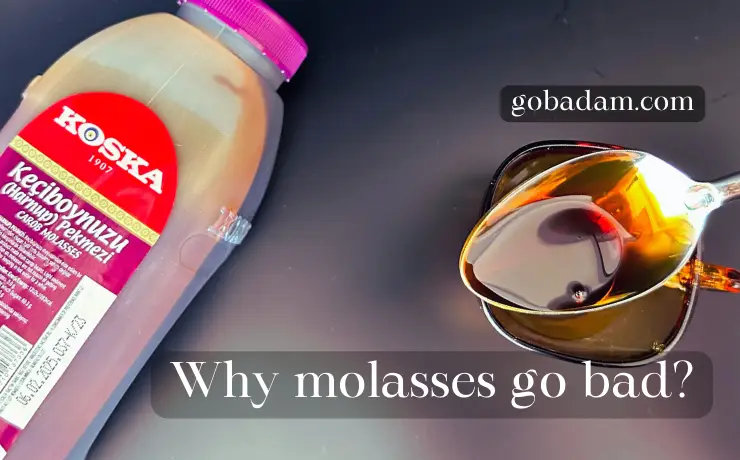Can molasses go bad? A question often pondered by culinary aficionados and health enthusiasts alike. Molasses, with its rich history and varied origins—ranging from sugarcane to beet—has a fascinating journey from field to table.
But like all natural products, its shelf life and freshness can be influenced by factors such as its inherent chemistry, storage techniques, and even the type of molasses you’re using, be it blackstrap or light.
👉🏻 Dive into yummy molasses world
As we delve deeper into this sweet elixir’s world, we’ll uncover how to spot signs of spoilage, understand its longevity compared to other sweeteners, and discover best practices for preserving its distinctive flavor and benefits.
Can molasses go bad?
Yes, molasses can go bad. While molasses possesses a naturally long shelf life due to its high sugar content which acts as a preservative, it’s not immune to spoilage.
Over time, if exposed to moisture, and contaminants, or stored improperly, molasses can develop mold or an off aroma, indicating it’s no longer safe for consumption. Always store it in a cool, dry place with a tightly sealed lid to maximize its lifespan, and regularly check its texture and smell to ensure freshness.
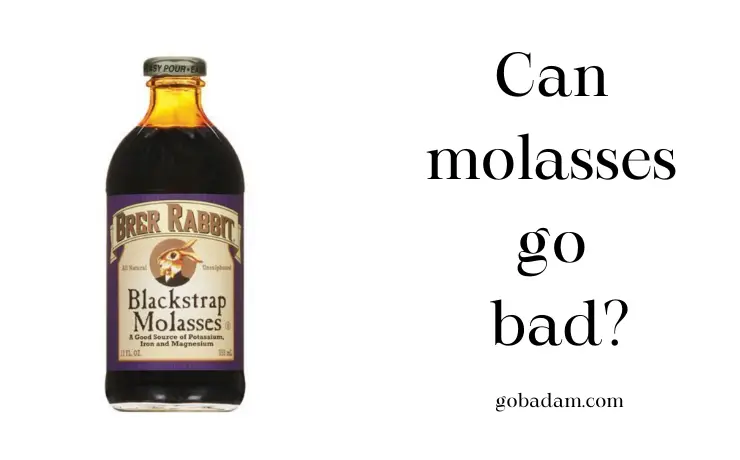
What is molasses?
Molasses is a thick, viscous byproduct produced during the sugar extraction process from sugarcane or sugar beets. As the cane or beet juice is boiled, sugar crystals are extracted, and the remaining dark liquid is molasses.
There are various types of molasses, determined by the number of boilings the juice undergoes and the amount of sugar extracted. The most common types include light molasses (from the first boiling), dark molasses (from the second boiling), and blackstrap molasses (from the third boiling).
Each type has a distinctive flavor and consistency, with blackstrap molasses being the most robust and nutrient-dense, containing vitamins and minerals like iron, calcium, and magnesium.
How long does molasses last once opened?
Once opened, molasses can last for a significant amount of time due to its high sugar content, which acts as a natural preservative. If stored properly, an opened jar of molasses can remain fresh for about 1 to 2 years.
However, its longevity also depends on storage conditions. You should always refer to the manufacturer’s expiration date on the packaging as a guideline.
Also, according to the United States Agriculture Department, unopened molasses can be stored at room temperature for 12 months. After opening, store at room temperature for 6 months for best quality.
Can expired molasses make you sick?
Expired molasses can potentially make you sick if it shows signs of spoilage, such as mold or an off smell. While its high sugar content acts as a preservative, it’s not immune to contamination over time. Always inspect molasses before use, and if there’s any doubt about its quality, it’s safer to discard it.

Spoilage signs: How to know if molasses has gone bad?
There are several ways to know if molasses has gone bad or not. Appearance, aroma, texture, light, room temperature, air permeability, and so on. Let’s get to know them closer.

Signs of Spoiled Molasses: Aroma, Texture, and Appearance
Molasses, a staple in many kitchens, is known for its long shelf life. However, like all food products, it isn’t impervious to spoilage. Recognizing the signs of deterioration can ensure you consume only fresh molasses and avoid potential health risks. Here are the common signs that your molasses may have gone bad:
- Aroma: Fresh molasses has a distinct, sweet, and somewhat smoky aroma. If your molasses emits a sour or off-putting smell, it’s a clear sign that it has spoiled.
- Texture: Molasses is naturally a thick and smooth syrup. The presence of lumps, crystallization, or a watery consistency might indicate spoilage. Additionally, if you notice any mold growth on the surface, it’s time to discard the jar.
- Appearance: Fresh molasses has a consistent dark brown hue. Any discoloration or a cloudy appearance can be indicative of contamination or degradation.
In all cases, it’s essential to trust your senses. If something seems amiss with the molasses, it’s always safer to avoid consumption.
Light, Temperature and Molasses
Molasses, derived from the sugar extraction process of sugarcane or sugar beets, is a treasured sweetener with an extensive shelf life. However, like many natural products, its quality can be influenced by its storage environment, particularly factors like light and temperature. Here’s how these elements interact with molasses:
Light
Impact: Prolonged exposure to direct sunlight or strong artificial light can degrade the quality of molasses. Light can cause subtle changes in the flavor profile and diminish some of its nutritional benefits.
Solution: Store molasses in a dark place, preferably in its original tinted container, which offers some protection against light.
Temperature
Impact: Molasses prefers stable temperatures. If exposed to frequent temperature fluctuations, it can affect its consistency, potentially leading to crystallization. Extreme cold might thicken the molasses, making it harder to pour, while excessive warmth can make it too runny.
Solution: A cool, dry place like a pantry is ideal for molasses. While refrigeration isn’t necessary if you choose to refrigerate it, be prepared for a denser consistency. Letting it sit at room temperature for a while before use can restore its pourable texture.
In essence, for the prolonged freshness and quality of molasses, it’s crucial to consider its storage environment. Keeping it away from direct light and in a place with a consistent temperature ensures you enjoy its rich, sweet flavor to the fullest.
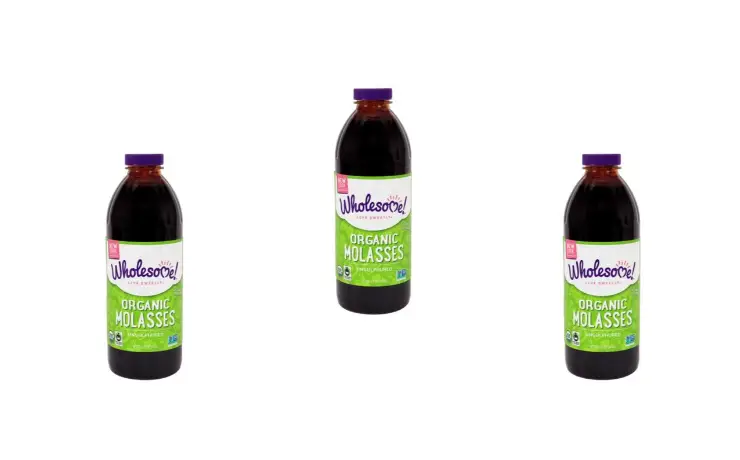
Potential Risks of Consuming Rancid Molasses
Consuming rancid or spoiled molasses is not just a matter of palatability; there are potential health concerns to be aware of. Here’s a breakdown of the potential risks associated with ingesting deteriorated molasses:
- Digestive Upsets: Spoiled molasses can cause digestive discomforts, including stomachaches, nausea, and diarrhea. The body may react adversely to the intake of degraded substances or any microbial growth within the molasses.
- Mold Consumption: Mold growth is a visible sign of spoilage in molasses. Consuming moldy food can introduce mycotoxins into the body, leading to allergic reactions or respiratory issues in some individuals.
- Loss of Nutritional Value: Over time and especially if exposed to adverse conditions, the beneficial nutrients in molasses, such as iron, calcium, and magnesium, can degrade, reducing its nutritional profile.
- Bacterial Contamination: If molasses is exposed to contaminants or improperly stored, it could harbor harmful bacteria. Though the high sugar content acts as a natural preservative, it’s not entirely foolproof.
- Unpleasant Taste and Odor: While this isn’t a health risk per se, rancid molasses can significantly alter the taste and aroma of dishes it’s used in, potentially ruining culinary preparations.
To minimize these risks, always store molasses correctly and check it for signs of spoilage before use. Remember, when in doubt about the freshness of any food product, it’s always safer to err on the side of caution and discard it.
Storage tips: How to store molasses long term?
Molasses, due to its high sugar content, acts as a preservative and is naturally long-lasting. However, to ensure its quality over the long term, you should follow these storage guidelines:
Container: Store molasses in its original container, or if you’re transferring it, use a clean, airtight container made of glass or food-grade plastic. Ensure the container’s seal or lid is in good condition.
Temperature: Keep molasses at room temperature. Avoid storing it in areas with significant temperature fluctuations like near stoves or ovens.
Darkness: Like many foods, molasses can degrade when exposed to light for extended periods. Store it in a dark place like a pantry or cupboard.
Avoid Contamination: Always use a clean utensil when scooping out molasses. Introducing contaminants can decrease its shelf life and quality.
Check for Crystals: Over time, molasses can sometimes crystallize, especially if exposed to air. This doesn’t mean it has spoiled, but it might change the texture. If you notice this, you can gently warm the molasses to dissolve the crystals.
Shelf Life: While molasses has a long shelf life, it’s good to check it periodically. If it smells off or develops mold, discard it. Typically, molasses can last for at least a year past its expiration date if stored properly.
Refrigeration: While it’s not necessary to refrigerate molasses, doing so can extend its shelf life even further. However, be aware that refrigeration can cause molasses to become very thick and harder to pour.
Label and Date: If you’re transferring molasses to a new container or if you have bulk molasses, it’s a good idea to label and date it so you can keep track of its age.
By following these tips, you can store molasses for the long term without compromising its flavor or quality.
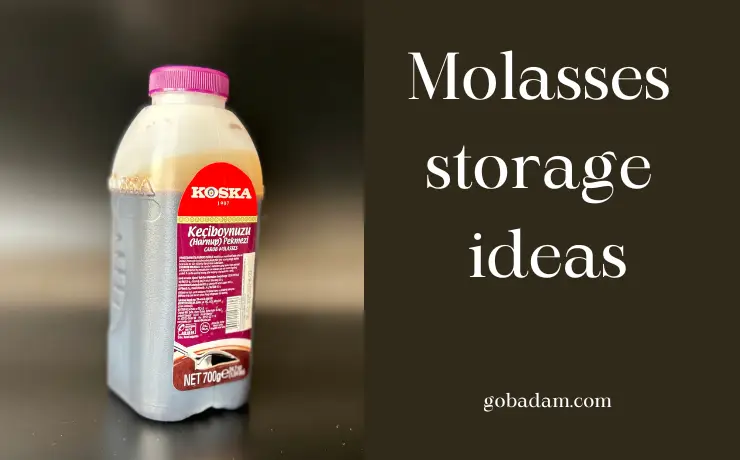
Molasses’ Shelf Life vs. Other Natural Sweeteners
Molasses boasts a relatively long shelf life compared to some other natural sweeteners. Due to its high sugar content, molasses can remain fresh for about 1 to 2 years when properly stored.
In contrast, sweeteners like honey possess an almost indefinite shelf life if kept in the right conditions, while maple syrup, once opened, typically has a shelf life of about a year when refrigerated.
Agave nectar, another alternative, lasts about two years when unopened but should be consumed within three months once opened. In essence, while molasses has a commendable shelf life, it varies when juxtaposed with other natural sweeteners, and proper storage remains key for all.
👉🏻 Check out our article: Does Agave Nectar Go Bad?
Blackstrap vs. Light Molasses
Light Molasses is derived from the first boiling of the sugar syrup, resulting in a milder, sweeter flavor and lighter color. It’s commonly used in baking and has a moderate nutritional profile.
PURCHASE 👉🏻 light organic molasses
On the other hand, Blackstrap Molasses comes from the third and final boiling, giving it a darker hue and a robust, bittersweet taste. While it’s less common in sweet dishes due to its intense flavor, it stands out nutritionally, packed with minerals like iron and calcium.
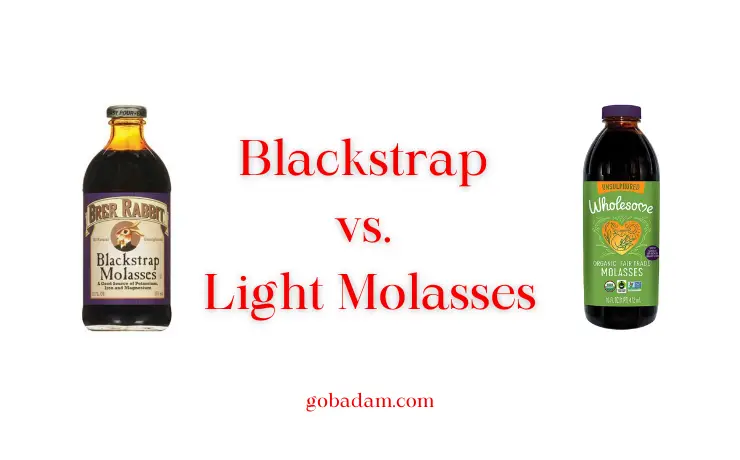
Does blackstrap molasses go bad?
Yes, blackstrap molasses can go bad, especially if improperly stored or contaminated, but it generally has a long shelf life due to its high sugar content acting as a preservative.
PURCHASE 👉🏻 organic blackstrap molasses
In essence, while both types stem from the same sugar extraction process, they differ in flavor intensity, color, and nutritional value.
Molasses vs. Sweetening syrups
Molasses is a thick, viscous byproduct from the sugar extraction process of sugarcane or sugar beets, known for its rich, distinct flavor that ranges from sweet to bittersweet, depending on its type.
It also boasts nutritional benefits, especially in variants like Blackstrap molasses. On the other hand, sweetening syrups, such as corn syrup or maple syrup, are often processed to retain a consistent sweet flavor and may lack the depth and nutrients found in molasses.
Here are some sweetening syrups that you may interested in 👇🏻
While both are used to sweeten dishes, molasses offers a more complex flavor and nutrient profile, whereas sweetening syrups provide a straightforward sweetness.
What to do with old molasses?
If you have old molasses and are pondering whether to toss it or use it, here are some ideas and considerations:
- Check for Spoilage: Before repurposing, ensure the molasses hasn’t gone bad. Look for signs like mold, an off-putting aroma, or changes in consistency.
- Natural Fertilizer: Molasses can be used as a natural fertilizer for plants. When mixed with water, it provides beneficial sugars and minerals to soil microbes.
- Rust Remover: Molasses mixed with water can help remove rust from metal items. Soak the rusty item in a molasses-water solution (1 part molasses to 9 parts water) for a couple of weeks, then scrub off the rust.
- Compost Enhancer: Molasses can be a great addition to your compost pile, acting as a food source for beneficial microbes, which in turn helps break down organic material more efficiently.
- Baking and Cooking: Even if it’s old, molasses can still be used in recipes that call for a robust sweetener, such as gingerbread, cookies, or certain sauces, provided it hasn’t spoiled.
- Homemade BBQ Sauce: The deep, rich flavor of molasses can be a fantastic base or addition to homemade BBQ sauces.
- Natural Hair Mask: Due to its hydrating properties, molasses can be used as a natural hair mask. However, it’s sticky, so ensure you rinse thoroughly!
- Animal Feed: Some farmers use molasses as a supplement to animal feed, especially for livestock, as it provides minerals and is a palatable source of carbohydrates.
Always remember to handle old molasses with care. If you suspect it may have gone bad or if it shows visible signs of spoilage, it’s better to discard it safely.
Frequently Asked Questions About Can Molasses Go Bad?
Here are some answers to some frequently asked questions about can molasses go bad. Molasses and its varieties may have different shelf life and life spans because of their ingredients. Please always follow the manufacturer’s instructions.
Can molasses make you sick?
Molasses, like everything else, can make you sick if you consume excessive amounts. May cause allergic reactions. Additionally, using spoiled or out-of-date molasses products may be dangerous to your health as well.
How can you tell if a jar of molasses has gone bad without opening it up?
Without opening the jar, it can be challenging to determine if molasses has gone bad. However, check for any visible mold or discoloration through the jar, separation of contents, or swelling of the container.
If any of these signs are present, it’s an indication the molasses might be spoiled. For a definitive assessment, however, opening the jar and checking the aroma and consistency is essential.

